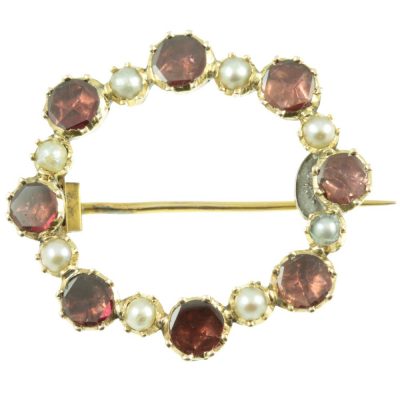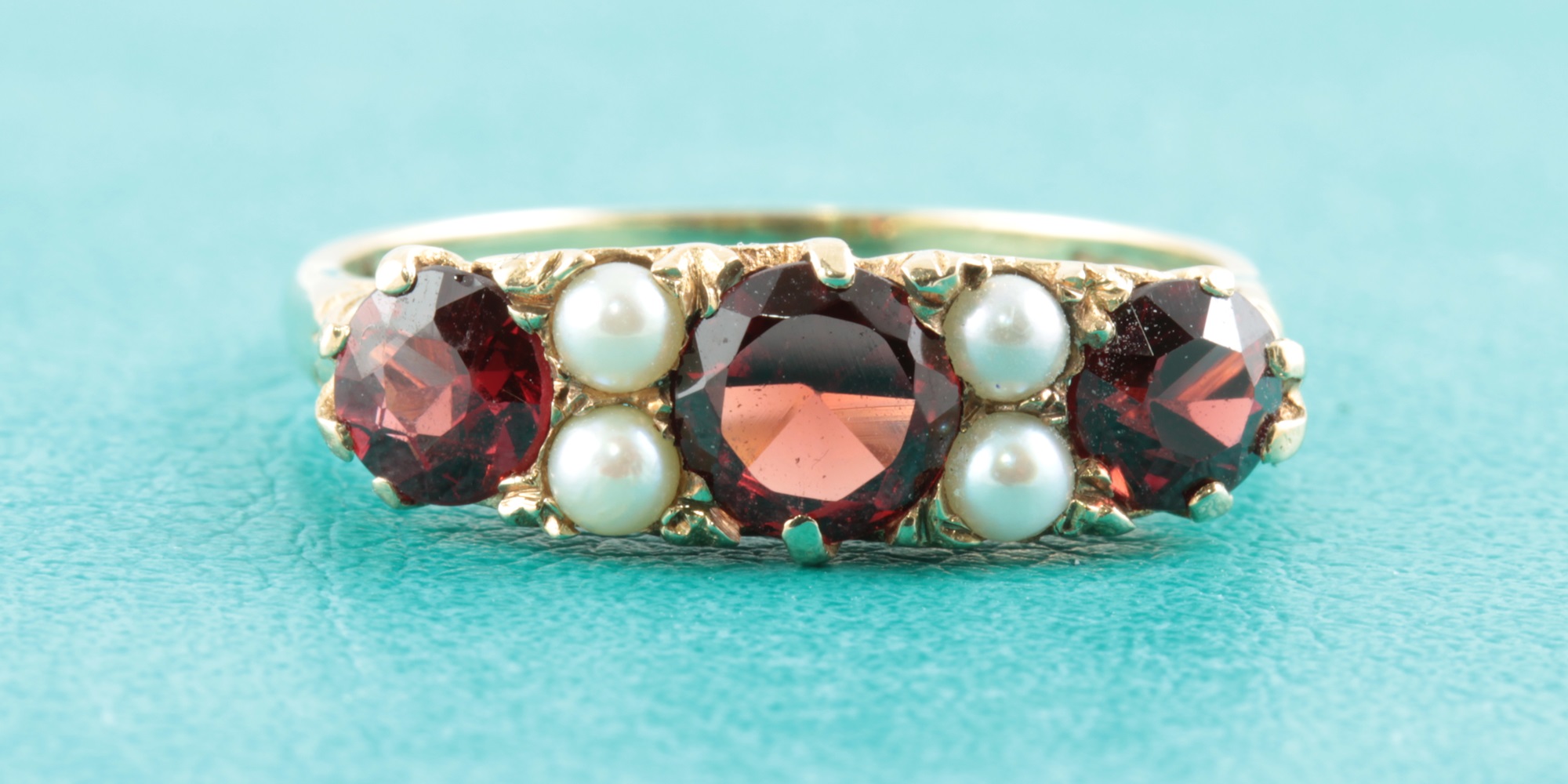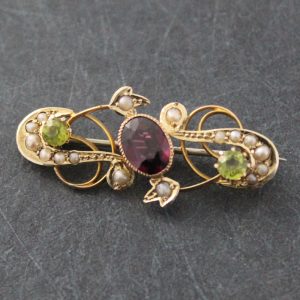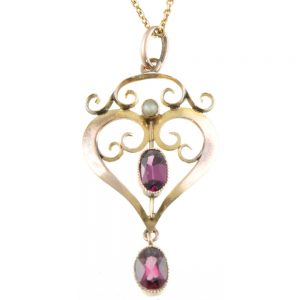Garnet
 Garnet derives its name from the Latin word “granatus” which means seed or grain. This is because of the rounded crystals of the gemstone and their similarity to the red kernels of the pomegranate fruit. It also takes its name from the 14th-century English word “gernet” which means dark red. Garnet is the group term used for different colour but closely related mineral gemstones. These gems come in a wide variety of colours from green to orange to red, with rarer specimens being blue or colourless. They have a hardness of 6.5 to 7.5 on the Moh`s scale, making them moderately suitable for everyday use. The main gemstones in this group are pyrope, almandite, spessartite, grossularite, andradite and uvarovite. The two most prominent gems in the Garnet group are pyrope and almandite, which are also referred to as the red carbuncle stones.
Garnet derives its name from the Latin word “granatus” which means seed or grain. This is because of the rounded crystals of the gemstone and their similarity to the red kernels of the pomegranate fruit. It also takes its name from the 14th-century English word “gernet” which means dark red. Garnet is the group term used for different colour but closely related mineral gemstones. These gems come in a wide variety of colours from green to orange to red, with rarer specimens being blue or colourless. They have a hardness of 6.5 to 7.5 on the Moh`s scale, making them moderately suitable for everyday use. The main gemstones in this group are pyrope, almandite, spessartite, grossularite, andradite and uvarovite. The two most prominent gems in the Garnet group are pyrope and almandite, which are also referred to as the red carbuncle stones.
Pyrope: pyrope which is the Greek word for fiery is a blood-red Garnet, also called Bohemian Garnets. As they have been mined in the Bohemian hills near Prague in the Czech Republic for centuries. Pyrope has been mined there since the time of the Celts, with jewellery containing pyrope being found in Germanic tribes as far back as the 6th century. However, it wasn`t until the 16th century that mining and gemstone cutting took place on an industrial level. This was mainly due to the gemstone’s increase in value. Pyrope reached its height during the Victorian period, with rose-cut Bohemian Garnet jewellery being extremely popular. Mining and gem cutting still continue there today on a small scale.
Almandite: almandite is an iron aluminium silicate and is a deep red colour with a violet tint. It is typically cut as a cabochon and when done so it is referred to as a carbuncle. The name carbuncle comes from the Latin word for “burning coal”. Almandite is the most abundant of the Garnet varieties. Historically it was mined in Asia Minor, India and Sri Lanka. Along with deposits in Austria and the Czech Republic. In the 1970`s large deposits of almandite were discovered in the Northern Territory of Australia.
History & Lore
The Ancient Egyptians highly prized this gemstone and held it as a symbol of life. It has been found in the tombs of pharaohs dating as far back as 3,800 BC. In Ancient Rome this gemstone was seen as a symbol of power and authority. The Romans used carved Garnets set into rings to stamp the wax seals on their important documents. The Greeks associated the gemstone with Persephone, who was the goddess of sunshine. They believed that wearing the gemstone as a necklace would endow the wearer with the ability to see in the dark. They also believe that Garnet could protect children from drowning. The famous Greek philosopher Plato is said to have had his portrait engraved on a Garnet.
 In the Old Testament, it is said to be one of the twelve stones on the breastplate of Aaron the high priest. It was also said to have been used as a lantern by Noah to guide his Ark in the darkness of night.
In the Old Testament, it is said to be one of the twelve stones on the breastplate of Aaron the high priest. It was also said to have been used as a lantern by Noah to guide his Ark in the darkness of night.
In the Middle Ages, Garnet was believed to have the power to protect the owner from poison. Monarchs and the nobility would place the gem into their drinking vessels as a guard against poison. Crusaders wore the gemstone to protect them from harm and to ensure a safe return home. It was also believed to offer protection against the plague.
In Christianity, Garnet symbolizes the blood of Christ and the passion of Christ. Cabochon cut Garnets, typically called carbuncles were predominantly used in cloisonne decoration of ecclesiastical objects.
Smithsonian Pyrope Hair Comb

You can also get in touch with Carusjewellery.com on Facebook , were you may leave any comments or questions you have about this article.





